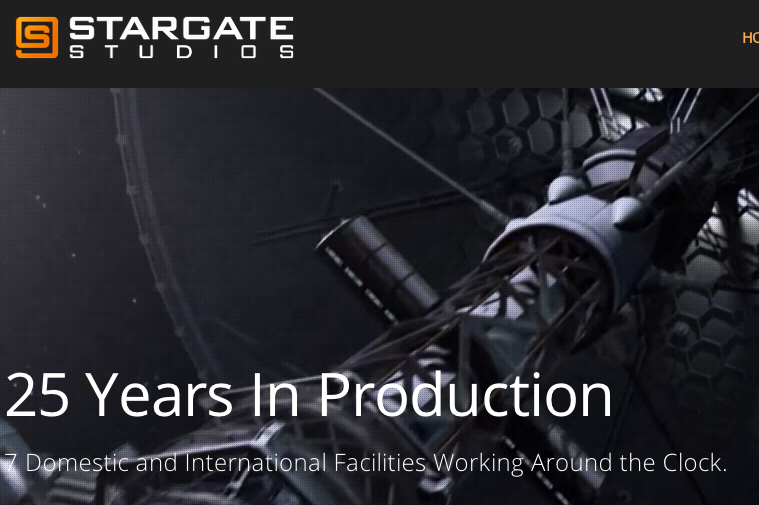Zombies, Car Chases, and Far Flung Places: The big data files behind some of the most popular TV
By Meg Cater
Two decades ago, television was the mainstay of evening entertainment, the central hearth around which families congregated. However, no TV series came close to rivaling the all-engrossing dramatic experience of today’s shows. While writers, directors and actors advancing their prowess are part of the cause, technology-driven leaps forward in production, post-production and visual special effects may be the bigger player.
This less-glamorous underworld of television creation is where zombies come alive and far off exotic places become real. It’s also where one of the most successful production and visual effects companies in the world, Stargate Studios, is likely sculpting the next episode of your favorite show. With the largest archive of pre-shot footage in the world, Stargate Studio’s website is like a tour through some of the most popular shows of late: Heroes, The Walking Dead, 24, Grey’s Anatomy, to name a few.
Stargate works on 20 to 25 different shows at a time. Their main studio is in Los Angeles, but they’ve also settled in Atlanta, Canada, Germany, Dubai, and the beautiful Mediterranean island of Malta. Coinciding with advances in TV quality over the last few decades, Stargate has grown globally and witnessed a 180° shift in the tide of their workflow.
“It used to be that our business was about bringing the rest of the world to Hollywood,” says Darren Frankel, President of Stargate Studios. “Now, producers go all over the world themselves, wherever they can get tax credits or shoot inexpensively.”
A core aspect of their business is travelling to gather footage for their virtual backlot or for a scene written in a particular episode. They go anywhere, capturing scenes from zooming cars and boats, perfect beaches, steamy jungles, famous hotels, busy urban restaurants, and even active war zones. That part hasn’t changed.
But today, Stargate not only transports footage from the field back to L.A., they are sending footage from the field back to sets all over the globe. On top of that, apparently today’s TV drama stars need to visit foreign locations often.
“There are all these shows where they write some episode that’s suppose to be in, say, Cairo,” says Frankel, “and they aren’t actually going to Cairo, we are.”
After flying to the largest Middle-Eastern metropolis and photographing what they need, Stargate sends multiple takes of each location back to one of their studios to be edited and inserted behind footage of actors, before sending the final version for broadcast. The work they do is so convincing you would never imagine the actors were originally filmed against a solid green wall rather than in a bustling Egyptian city.
It’s magic, something hard for most of us to grasp. “Once,” Frankel laughs, “the producers of Grey’s Anatomy got a call from the Seattle Coast Guard threatening a fine because they hadn’t gotten permission to film on a ferry crossing Puget Sound, much less to light it on fire!” It took some real convincing for the guy to believe it was all done with pre-shot footage and visual effects.
But sending and receiving all that footage to and from multiple locations is not an easy task.
Dealing with big data
“We deal with big data photography and moving images and, because people are shooting in 4k, the data keeps getting bigger and bigger,” says Frankel. “We send terabytes of data because it has to be in its pristine form, so compression is not going to work. Then, if you are talking about DPX files, it’s at least 8 MB per frame, so it gets big and cumbersome fast.”
In this kind of environment, it’s critical for Stargate to have the file transfer software that can keep up with their schedule and is easy to use by their clients. “The producers and executives don’t want to feel technically hamstrung by the fact that they are shooting in some far flung place, so we are constantly trying to improve how we deliver media files in a way that’s conducive to people who aren’t very tech savvy,” says Frankel.
After a lot of research, Stargate recently selected Signiant’s Media Shuttle. “We wanted to know how we could move our data faster,” says Frankel. “ Of course, we are constantly looking for the best way to improve the good, fast, cheap thing, and of all the choices out there, Signiant was the best one for us.”
Secure file movement
Security is also a major concern for Stargate Studios. “In some shows, the security is really critical, like in The Walking Dead,” says Frankel. In the past they’ve had to go to enormous lengths to keep their client’s files secure, hand carrying them on airplanes most of the time. “We’re anticipating using Media Shuttle for moving all of our high-security files.” Keeping their client’s files siloed from each other has also been an issue for Stargate.
“We want to use Media Shuttle as our branded interface to the world, in a way that clients only see their own files,” says Frankel. “When producers see other people’s footage on their machine, they freak out about the security of their own files, so we are very careful about how that material is shared.”
Displaying a vast archive
A final aspect that drew Stargate to Media Shuttle is the ease with which they can now move around their vast archives, and to showcase the range of footage they have in-house on the web.
“Moving around and displaying our archives to people hasn’t been something we’ve been very good at,” says Frankel. “That’s something we’re excited for Media Shuttle to help us with too.”
In the past, Stargate’s file sharing adventures seemed to be almost on par with their gorilla footage gathering. Using a combination of FTP and “sneakernet” (hand carrying physical media between computers), they had the added stress of keeping up with tons of different devices, slow or interrupted transmissions, and training people to use an outdated file sharing system.
Media Shuttle, with its easy-to-use, brandable, language-specific portals is a hybrid SaaS solution that more and more teams like Stargate are choosing for their international and in-house work. Rather than having to wrestle with moving big data files, they can now concentrate on those TV series we stay up way to late to watch — and their own adventures gathering footage around the world, which is what they really love to do.
“No matter where it is,” says Frankel, “We always have someone crazy enough to say, ‘I’ll go there.’”



